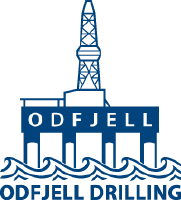
Odfjell Drilling Ltd
OSE:ODL


| US |

|
Johnson & Johnson
NYSE:JNJ
|
Pharmaceuticals
|
| US |

|
Berkshire Hathaway Inc
NYSE:BRK.A
|
Financial Services
|
| US |

|
Bank of America Corp
NYSE:BAC
|
Banking
|
| US |

|
Mastercard Inc
NYSE:MA
|
Technology
|
| US |

|
UnitedHealth Group Inc
NYSE:UNH
|
Health Care
|
| US |

|
Exxon Mobil Corp
NYSE:XOM
|
Energy
|
| US |

|
Pfizer Inc
NYSE:PFE
|
Pharmaceuticals
|
| US |

|
Palantir Technologies Inc
NYSE:PLTR
|
Technology
|
| US |

|
Nike Inc
NYSE:NKE
|
Textiles, Apparel & Luxury Goods
|
| US |

|
Visa Inc
NYSE:V
|
Technology
|
| CN |

|
Alibaba Group Holding Ltd
NYSE:BABA
|
Retail
|
| US |

|
3M Co
NYSE:MMM
|
Industrial Conglomerates
|
| US |

|
JPMorgan Chase & Co
NYSE:JPM
|
Banking
|
| US |

|
Coca-Cola Co
NYSE:KO
|
Beverages
|
| US |

|
Walmart Inc
NYSE:WMT
|
Retail
|
| US |

|
Verizon Communications Inc
NYSE:VZ
|
Telecommunication
|
Utilize notes to systematically review your investment decisions. By reflecting on past outcomes, you can discern effective strategies and identify those that underperformed. This continuous feedback loop enables you to adapt and refine your approach, optimizing for future success.
Each note serves as a learning point, offering insights into your decision-making processes. Over time, you'll accumulate a personalized database of knowledge, enhancing your ability to make informed decisions quickly and effectively.
With a comprehensive record of your investment history at your fingertips, you can compare current opportunities against past experiences. This not only bolsters your confidence but also ensures that each decision is grounded in a well-documented rationale.
Do you really want to delete this note?
This action cannot be undone.

| 52 Week Range |
37.05
59.2
|
| Price Target |
|
We'll email you a reminder when the closing price reaches NOK.
Choose the stock you wish to monitor with a price alert.

|
Johnson & Johnson
NYSE:JNJ
|
US |

|
Berkshire Hathaway Inc
NYSE:BRK.A
|
US |

|
Bank of America Corp
NYSE:BAC
|
US |

|
Mastercard Inc
NYSE:MA
|
US |

|
UnitedHealth Group Inc
NYSE:UNH
|
US |

|
Exxon Mobil Corp
NYSE:XOM
|
US |

|
Pfizer Inc
NYSE:PFE
|
US |

|
Palantir Technologies Inc
NYSE:PLTR
|
US |

|
Nike Inc
NYSE:NKE
|
US |

|
Visa Inc
NYSE:V
|
US |

|
Alibaba Group Holding Ltd
NYSE:BABA
|
CN |

|
3M Co
NYSE:MMM
|
US |

|
JPMorgan Chase & Co
NYSE:JPM
|
US |

|
Coca-Cola Co
NYSE:KO
|
US |

|
Walmart Inc
NYSE:WMT
|
US |

|
Verizon Communications Inc
NYSE:VZ
|
US |
This alert will be permanently deleted.
 Odfjell Drilling Ltd
Odfjell Drilling Ltd
Odfjell Drilling Ltd
Investor Relations
Odfjell Drilling Ltd., founded in Norway in 1973, has carved a prominent niche in the global oilfield services sector. Originating as a regional drilling operator, the company has evolved into an international player, servicing the offshore oil and gas industry with a focus on harsh environment markets. Central to its operations is a fleet of state-of-the-art, semi-submersible drilling rigs and drillships, engineered to withstand the world's most challenging environments. Each rig is a profitable asset, enabling the company to secure long-term contracts with major oil companies, providing stability and predictability in cash flows. By deploying advanced technology and maintaining stringent safety standards, Odfjell Drilling ensures efficient and reliable exploration and production, which forms the backbone of its revenue generation.
To augment its core drilling operations, Odfjell Drilling has diversified its offerings to include well services and engineering capabilities. This diversification allows the company to extend its expertise beyond drilling, offering comprehensive solutions that cover well completion, intervention, and project management. The well services division, utilizing cutting-edge technologies, supports oil and gas companies in optimizing their hydrocarbon extraction, thus enhancing reservoir performance and extending the life of oilfields. Simultaneously, their engineering division provides strategic consultancy and tailored project solutions, leveraging decades of industry knowledge to drive efficiency and innovation. Through these integrated services, Odfjell Drilling not only fortifies its market position but ensures a steady stream of income, resilient to the cyclical nature of the oil and gas industry.

Odfjell Drilling Ltd., founded in Norway in 1973, has carved a prominent niche in the global oilfield services sector. Originating as a regional drilling operator, the company has evolved into an international player, servicing the offshore oil and gas industry with a focus on harsh environment markets. Central to its operations is a fleet of state-of-the-art, semi-submersible drilling rigs and drillships, engineered to withstand the world's most challenging environments. Each rig is a profitable asset, enabling the company to secure long-term contracts with major oil companies, providing stability and predictability in cash flows. By deploying advanced technology and maintaining stringent safety standards, Odfjell Drilling ensures efficient and reliable exploration and production, which forms the backbone of its revenue generation.
To augment its core drilling operations, Odfjell Drilling has diversified its offerings to include well services and engineering capabilities. This diversification allows the company to extend its expertise beyond drilling, offering comprehensive solutions that cover well completion, intervention, and project management. The well services division, utilizing cutting-edge technologies, supports oil and gas companies in optimizing their hydrocarbon extraction, thus enhancing reservoir performance and extending the life of oilfields. Simultaneously, their engineering division provides strategic consultancy and tailored project solutions, leveraging decades of industry knowledge to drive efficiency and innovation. Through these integrated services, Odfjell Drilling not only fortifies its market position but ensures a steady stream of income, resilient to the cyclical nature of the oil and gas industry.





























 You don't have any saved screeners yet
You don't have any saved screeners yet
